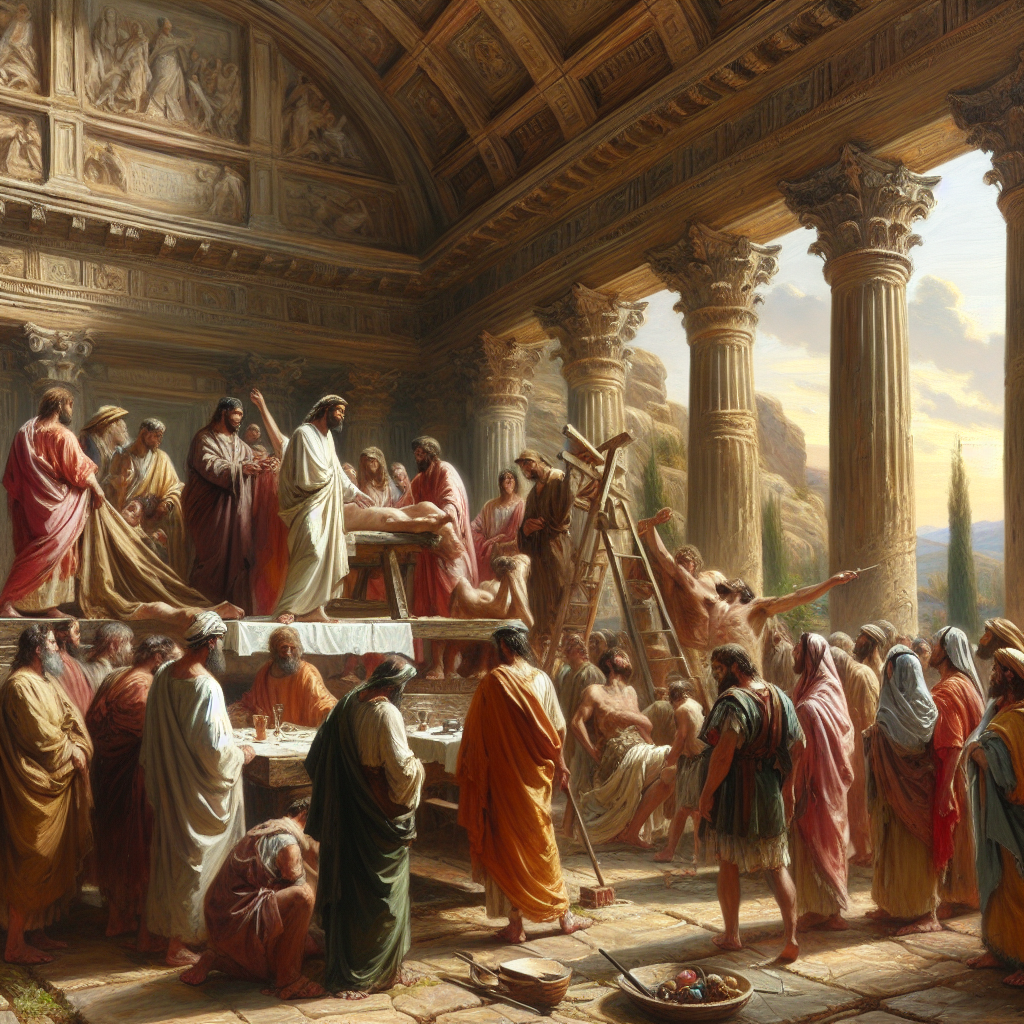Matthew 27: Unraveling the Power of Jesus' Death and Resurrection

Analysis of Matthew 27
Key Verses
- Matthew 27:52-53: "The tombs broke open and the bodies of many holy people who had died were raised to life. They came out of the tombs after Jesus’ resurrection and went into the holy city and appeared to many people." (NIV)
- Matthew 27:54: "When the centurion and those with him who were guarding Jesus saw the earthquake and all that had happened, they were terrified, and exclaimed, 'Certainly this was the Son of God!'” (NIV)
Themes
- The Power of Jesus' Death and Resurrection: This chapter underscores the profound impact of Jesus' crucifixion and resurrection, showcasing His divine power and authority over life and death.
- The Fulfillment of Prophecy: The narrative fulfills numerous Old Testament prophecies, affirming Jesus' identity as the Messiah and the foretold Savior.
- The Contrast Between Human Justice and Divine Justice: The chapter contrasts the flawed human justice system that condemned Jesus with the divine justice and redemption He offers through His sacrifice.
Historical Context
- Time Period: The events of Matthew 27 are set around 30-33 AD, during the final days of Jesus' earthly ministry.
- Political Climate: Judea was under Roman occupation, with Pontius Pilate serving as the Roman governor. This period was marked by tension between Roman authorities and Jewish leaders.
- Significant Events: The chapter details the trial, crucifixion, and subsequent resurrection of Jesus, which are central to Christian theology and soteriology.
Cultural Context
- Jewish Customs: The chapter references Passover, a significant Jewish festival, and the tradition of releasing a prisoner during the feast, which highlights the cultural and religious backdrop of the events.
- Roman Practices: The Roman method of crucifixion is depicted, emphasizing the brutal nature of this punishment and the role of Roman soldiers, including the centurion who recognized Jesus' divine nature.
Etymology
- Greek Words: The term "anastasis" (resurrection) in Greek signifies a rising again, symbolizing new beginnings and transformation.
- Hebrew Echoes: The narrative echoes Old Testament prophecies, such as those in Ezekiel 37:12-13 and Isaiah 26:19, which speak of resurrection and renewal.
Putting it into Practice
- Embracing Redemption: Reflect on the redemption and forgiveness offered through Jesus' death and resurrection, and consider how this can transform your personal life and relationships.
- Seeking Divine Justice: Align your actions with divine justice, as opposed to human justice, by seeking fairness and righteousness in your decisions and interactions.
- Emulating Jesus' Forgiveness: Practice forgiveness in your daily life, inspired by Jesus' example on the cross, to foster healing and reconciliation in your relationships.
Questions
- How do the events of Matthew 27 relate to your personal experiences of redemption and forgiveness?
- In what ways can you seek to align your actions with divine justice, rather than human justice?
- How can you apply the principle of forgiveness, as demonstrated by Jesus, to your relationships and daily life?
Reflecting on these questions can lead to personal growth, spiritual development, and a deeper understanding of the biblical text.